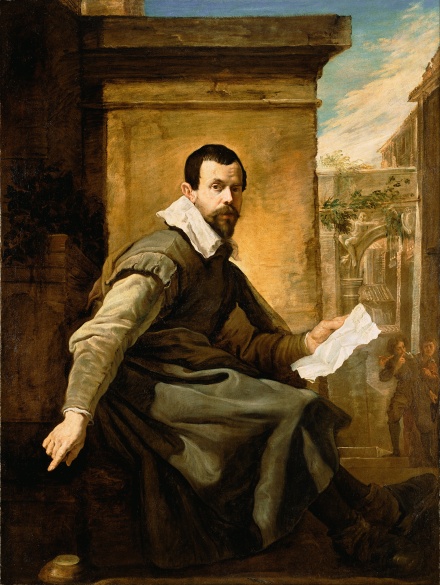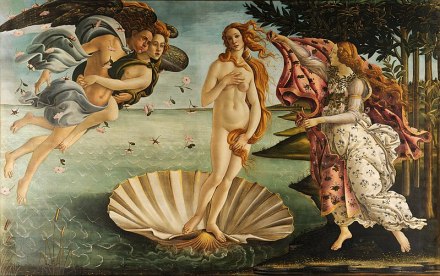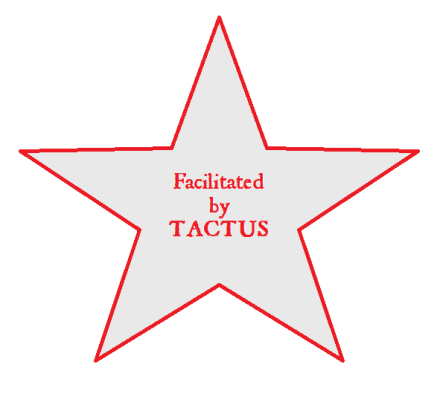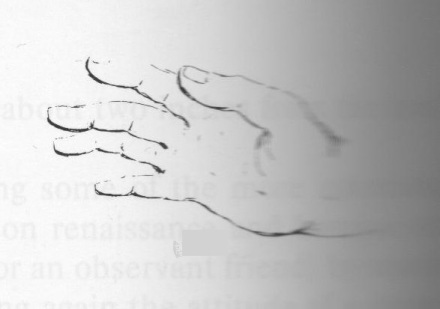Are you Arianna or Apollo? Orfeo or Euridice? Penelope or Ulisse? Nero or Poppea? Or are you fighting a Combattimento, writing a Lettera Amorosa, or dancing a Ballo?
Now you don’t have to go to Hell and back, to learn a baroque role. Here, to celebrate Monteverdi’s anniversary year, is a guide to studying his dramatic roles.
At the end of September 2017, OPERA OMNIA will present the premiere of Andrew Lawrence-King’s remake of Monteverdi’s lost masterpiece, Arianna (1608), performed by the young professionals and advanced students of the International Baroque Opera Project at Moscow State Theatre ‘Natalya Sats’. Read more about the project here. You can also read about WHY we are remaking Monteverdi’s Arianna.
This post was written to guide singing actors in that production, but is equally relevant to any of Monteverdi’s surviving music-dramas, including the three ‘operas’ [Monteverdi did not use the O-word] Orfeo, Ulisse & Poppea as well as Combattimeno, the Balli and other works in genere rappresentativo [in show-style, i.e. meant for acting, not just singing].
Whilst our modern ideals of theatre might send us on a deep psychological investigation of the character of the role to be played, in this article I suggest an alternative, historically informed approach.
When, as modern HIP performers, we take on the role of Arianna or Apollo, there are two stages to our work. The first step is to acquire the skill-set of Francesco Rasi (the tenor who sang the roles of Orfeo in 1607 and Apollo & Bacco in 1608) or Virginia Andreini Ramponi, known as La Florinda (the commedia dell’arte actress who triumphed in the role of Arianna in 1608, surpassing all the court singers); the second task is for you-as-Rasi or you-as-La-Florinda to play your character role.
The first of these two stages – acquiring the skill-set of the best historical performers – is by far the more challenging. After all, it was hardly a stretch for Rasi (great singer, somewhat self-obsessed) to play Orfeo or for La Florinda (prima donna, fond of lamenting) to represent Arianna!
When the first ‘operas’ were performed, circa 1600, there was no such thing as an Opera Singer. Since the genre itself was new and experimental, there was no previously existing system for educating performers for new demands. Rather, the participants in these first fully-sung baroque music-dramas brought skill sets from other, related disciplines. Court and chapel singers (Euridice was played in 1607 by a ‘little priest’ castrato) had a high level of general musicianship, sight-reading and ensemble skills. Many of them were competent composers and skilled instumentalists. As courtiers, they would have been trained in Rhetoric and courtly Etiquette, and would know how to stand, move, gesture and how to comport themselves in courtly situations: in the presence of a Prince, in a duel, at a dance, on horseback etc. Much of what we would today consider to be historical stage-craft would have been understood in the period as everyday courtly behaviour.
A modern singer of baroque opera would do well to study Historical Dance, Historical Fencing, and for that matter horse-riding. For an introduction to courtly posture and gesture, i.e. the beginnings of period acting, Start Here. Caccini sets out the priorities for singing c1600 as Text and Rhythm – read more from Caccini. Close study of the libretto is essential: the sung text includes many hints for movement, costume and characterisation, as well as a detailed map of ever-changing emotions – affetti. In this repertoire, the performer’s concentration is best kept ‘in the moment’, on the particularly word you are singing right now, on the affetto of this instant, ready for swift and bold changes from one affetto to its contrary, as Cavalieri recommends for the earliest surviving seicento music-drama, Anima e Corpo (1600), read more about how to Act with the Hand, Act with the Heart.
La Florinda’s success in Arianna (1608), surpassing all the star singers, reminds us of the basic meaning of the word recitare – it means ‘to act’. Musica recitativa is acted music, i.e. music-drama. Singers would do well to think less about the voce, and more about How to Act in this historical style.
It is not your job, as performer, to create a big structure of emotions, drama or music for the whole work: trust the librettist and composer to have done their work in this area. Your job is to realise the text and music from moment to moment, structured by the slow, steady pulse of baroque rhythm – Tactus. This blog has many posts about 17th-century rhythm: here is a small selection. Rhythm – what really counts? introduces the concept of Tactus; the theory of Proportions is the secret to Getting back to Monteverdi’s Time and for a practical approach there is this Hands-on guide to Tactus
This post presents a step-by-step guide on how to study your role. If you go through these 10 exercises, you will be well on the path towards acquiring that 17th-century skill-set, your approach will be utterly historical and securely practical, and after at least 10 repetitions of each phrase, linking together text, music and gesture, the task of memorisation will also be well begun, if not yet completed.
Have fun – approach these exercises and your study in general in a spirit of enthusiastic but relaxed concentration. Learning a big role is not ‘a mountain to climb’, it’s a journey to experience and enjoy. And your first performance is not ‘the end of the road’, it’s just one more step on the path, a place from where there is a good view of the distance you have already covered, as well as of the endless road ahead.
HOW TO PREPARE
1. Hold the music in your left hand
An easy one to start with, but it’s a game-changer! Acquiring this habit will allow you to make gestures with your right hand, one of the most important principles of historical acting.
2. Take up the contrapposto posture
If you do all your practice standing in period posture, that posture will gradually become ‘normal’ for you, and you will feel relaxed and look good in it, on stage.
- Stand diagonally, rather than square-on to your audience
- With your weight all on one foot (doesn’t matter which one)
- Bend the other (unweighted) leg, and let it show.
- Relax at the hips, so that your whole body forms an elegant curve.
- Your right hand is somewhat raised/extended
- Your left hand relaxed by the body (or holding your music!)
- Look out into the audience.
- Relax.
The toga is optional!
At first, you might find it difficult to maintain this posture. Don’t get tense, just switch your weight from one foot to the other, moving through the hips. Relax, and let your weight fall through the supporting leg into the floor.
But don’t move too often, and – in this style – you don’t walk and talk at the same time.
If your singing teacher has taught you to centre and relax, dropping the weight down into your feet, super! Do this, but allowing the weight to fall from that centre through ONE leg.
Don’t bounce up and down. If your singer teacher has taught you to bend your knees before high notes, don’t let this be seen by anyone, ever!
Don’t stand square-on to your audience, knees bent in the sumo-wrestler position of certain famous modern coloratura sopranos. That’s not baroque! Rather, look at and imitate period paintings. Be as beautiful as a picture!
TEXT
3. Speak the text, dramatically, like a great actor in a 1,000-seater hall.
3a. Paying close attention to Good/Bad syllables (this is period terminology for accented/unaccented syllables or notes: Caccini calls them Long/Short as in poetic analysis)
3b. And single/double consonants
3c. And the meaning of each individual word
You should be utterly comfortable with the text, ready to go on stage and act it in a spoken play. The anonymous 17th-century guide for a theatre’s artistic director, Il Corago (c1636) emphasises that singers should model their singing on the speech of a fine actor.
4. Speak the text again, waving your hand expressively on each Good syllable

On the final Bad syllable, just let your hand return to the body, relaxed.

5. Still speaking like a great actor, try to bring your spoken version close to the pitch-contours and rhythms of the music
In his preface to the first secular ‘opera’, Euridice (1600), Jacopo Peri explains that recitative is structured by the rhythm of the bass-line, and by the pitches of spoken declamation. Agazzari (1607) confirms that it is the continuo bass that ‘supports and guides the whole ensemble of instruments and voices’.
RHYTHM
Check #1 (music in your left hand) and #2 (baroque posture) again!
6. Sing the music, beating TACTUS
With the palm outwards, move your hand down and up, about 1 second down, 1 second up. Keep the movement steady, smooth, relaxed but with calm inner strength. Think of a big, slow-moving pendulum. Or the hand of God, turning the wheels of the cosmos.
- In C-time, this represents minims: down for one minim, up for the next.
- In 3/2 time – tripla, this represents three minims: down for three, up for the next three.
- In 3/1 time – sesquialtera, the complete movement represents three semibreves: down for two, up for the next one. The complete movement occupies the same total duration of time, but the movement is now unequal, down for two, up for one. You might need to practise changing from C to 3/1 and back again.
According to Zacconi (1592), Tactus is “even, solid, stable, firm… clear, secure, without fear and without any kind of wobbling” [equale, saldo, stabile, e fermo … chiaro, sicuro, senza paura, & senza veruna titubatione]
If you have trouble maintaining a steady beat, you can easily make yourself a Tactus-pendulum. Take a long string and tie something heavy to one end, to make a simple pendulum. You need 1 metre to make a 1-second beat (Mersenne, 1636).
CONNECTING TEXT & RHYTHM
Whilst dramatic music is guided by Tactus, as the historical concept of rhythm, there was no conductor in early ‘opera’ (Il Corago specifically rules out beating time in recitative), and of course actors cannot beat Tactus on stage (nor even in a courtly performance in genere rappresentativo, as Monteverdi indicates for the Lettera amorosa]. So the next exercise asks you to feel the Tactus internally, whilst you use your hand in a new way, linked to the Text.
7. Sing the music, waving your hand on the Good syllables, not on the Bad
This is the same as #4, but singing, rather than speaking. Many singers find that their good speaking habits get overwhelmed by bad singer habits, as soon as they start to sing. So…
7a. Check that you do not wave your hand on any Bad syllable.
7b. Check that your hand is already relaxed on the last (Bad) syllable
7c. And sing this last note short, just as you would speak it.
The next exercise refines this, by taking into account the length of the composed notes. Some singers reduce the contrast between long and short notes: such laziness makes the performance boring. Don’t do that! A most useful reminder in this style is “Long notes long, short notes short”, within the steady pulse of the Tactus.
8. Sing the music, waving your hand slow/quick according to the length of Good syllables
If the note is long, move your hand slowly at the beginning, so that you have plenty of movement in reserve for the end of the note. You’ll find that doing this exercise changes the way you sing long notes – that’s the whole idea of the exercise!
8a. Apply the Long Note Kit to Good syllables on Long Notes
THE LONG-NOTE KIT
- Start the note slowly and straight.
- Wait as long as possible.
- Crescendo towards the end of the note
- At the very end, relax the crescendo and allow vibrato to happen

Plaine note (with messa da voce),
Waived note (with messa da voice and late-arriving vibrato)
Roger North (1695)
cited in Greta Moens-Hanen
“Das Vibrato in der Musick des Barock”
For a fine demonstration of baroque vibrato, listen to Whitney Houston And I will always love you
9. Alternating Tactus and Good/Bad hand-movements, alternating speaking and singing, bring the sung version as close to speech as possible, structured by Tactus.
In this exercise, as you change between various options (speech/song; Tactus/word-accents) the aim is to unify all these into a version that is ‘between speech and song’ [Peri & Caccini], with exciting contrasts of word-accents (the essential ingredient of good poetry) and steady Tactus (the essential ingredient of 17th-century music).
ACTION
Check #1 (music in the left hand) & #2 (baroque posture) again!
10. Perform the whole speech, thinking of the meaning of the word, each time you wave your hand on a Good syllable.
Do this several times speaking, before you try to combine gesture with singing. The gestures you want are text-based, speech-based: quite different from typical gestures of modern singers.
One of the simplest, but most powerful gestures is simply to point (typically with the whole hand, rather than a single finger) at whatever you mention in your speech. See Baroque Gesture: what’s the Point?
And the ut pictura principle encourages you to create a mental image of whatever you are talking about, so that your gestures are directed towards imaginary objects in your vision, as well as to real objects, dialogue partners etc, on stage with you.
But as Cavalieri reminds us, 17th-century Action is not only hand-gestures – it’s also movements of the whole body, the way you walk, and especially facial expressions and Energia from the eyes.
Two things you don’t have to worry about: ornaments (many sources, including Cavalieri & Monteverdi, warn against ornamenting in this style); your own emotions. The concept of ‘moving the Passions’ – muovere gli affetti – is concerned with changing the audience’s emotions: not yours. Some performers like to work ‘hot’, being very involved themselves in the emotions of the moment, others prefer to stay ‘cool’, keeping control of their own feelings so as to be better able to influence the audience: most people find a good balance between those two extremes. But in this style, we are not interested in the performer’s emotions, we are trying to sway the audience’s feelings. That’s what matters.
So now you are ready to perform, playing the role of Rasi playing the role of Bacco… or playing the role of La Florinda playing the role of Arianna.
And as Dorilla (Arianna’s irrepressibly positive maid-servant) would say:
ET VIVETE LIETI!
(Don’t worry, be happy!)











Pingback: Baroque Opera then and now: 1600 & 1607, 1970-2020 | Andrew Lawrence-King
Pingback: Fake News? Early Opera, aka Seicento Dramatic Monody | Andrew Lawrence-King
Pingback: OPERA OMNIA – Music of the Past for Audiences of the Future | Andrew Lawrence-King
Pingback: Emotions in Early Opera | Andrew Lawrence-King